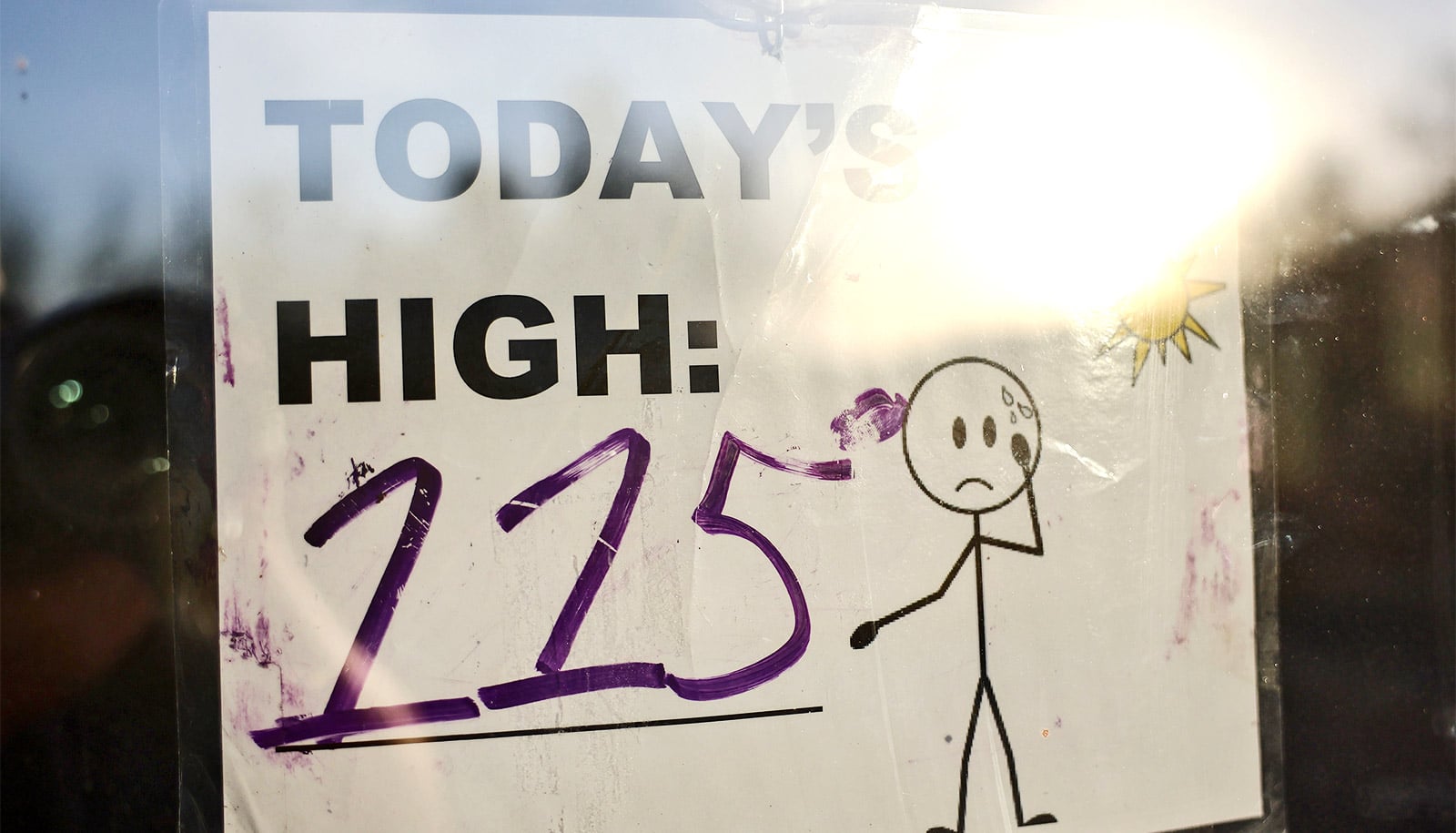A new study concludes that the heat index—essentially how hot it really feels—has increased much faster in Texas than has the measured temperature: about three times faster.
That means that on some extreme days, what the temperature feels like is between 8 and 11 Fahrenheit (5 to 6 Celsius) hotter than it would without climate change.
The study, using Texas data from June, July, and August of 2023, highlights a problem with communicating the dangers of rising temperatures to the public.
“…this is not going to get better unless we stop burning fossil fuels.”
The temperature alone does not accurately reflect the heat stress people feel. Even the heat index itself, which takes into account the relative humidity and thus the capacity to cool off by sweating, gives a conservative estimate of heat stress, according to study author David Romps, a professor of earth and planetary science at the University of California, Berkeley.
In 2022, Romps coauthored a paper pointing out that the way most government agencies calculate the heat index is inaccurate when dealing with the temperature and humidity extremes we’re seeing today. This leads people to underestimate their chances of suffering hyperthermia on the hottest days and of their chances of dying.
Dangerous heat
Texas is not an outlier. Last week, Arizona’s most populous county, covering most of Phoenix, reported that heat-associated deaths last year were 50% higher than in 2022, rising from 425 in 2022 to 645 in 2023. Two-thirds of Maricopa County’s heat-related deaths in 2023 were of people 50 years or older, and 71% occurred on days when the National Weather Service had issued an excessive heat warning, according to the Associated Press.
“I mean, the obvious thing to do is to cease additional warming, because this is not going to get better unless we stop burning fossil fuels,” Romps says. “That’s message No. 1, without doubt. We have only one direction we can really be taking the planet’s average temperature, and that’s up. And that’s through additional burning of fossil fuels. So that’s gotta stop and stop fast.”
The reason that it feels much hotter than you’d expect from the increase in ambient temperature alone is that global warming is affecting the interplay between humidity and temperature, he says. In the past, relative humidity typically dropped when the temperature increased, allowing the body to sweat more and thus feel more comfortable.
But with climate change, the relative humidity remains about constant as the temperature increases, which reduces the effectiveness of sweating to cool the body.
To deal with the irreversible temperature increases we already experience, people need to take precautions to avoid hyperthermia, Romps says. He advised that, for those in extreme heat situations and unable to take advantage of air conditioning, “you can use shade and water as your friends.
“You can coat yourself in water. Get a wet rag, run it under the faucet, get your skin wet, and get in front of a fan. As long as you are drinking enough water and you can keep that skin wetted in front of the fan, you’re doing a good thing for yourself.”
Romps’ study appears in the journal Environmental Research Letters.
How hot it really feels
Romps, an atmospheric physicist, got interested several years ago in how the human body responds to global warming’s increased temperatures. Although the heat index, defined in 1979, is based on the physiological stresses induced by heat and humidity, he noted that the calculations of the heat index did not extend to the extremes of heat and humidity experienced today. Romps and graduate student and now postdoctoral fellow Yi-Chuan Lu extended the calculation of the heat index to all combinations of temperature and humidity, enabling its use in even the most extreme heat waves, like those that buffeted Texas in the summer of 2023.
Over the decades, the nation’s major weather forecaster, the National Oceanic and Atmospheric Administration’s (NOAA) National Weather Service, has dealt with the lack of calculated values for high heat and humidity by extrapolating from the known values. Romps and Lu found, however, that the commonly used extrapolation falls far short when conditions of temperature and humidity are extreme. Although the heat index has now been calculated for all conditions using the underlying physiological model, those values have not yet been adopted by NOAA.
After Lu spent a sweltering summer in Texas last year, Romps decided to take the state as a case study to determine how global warming has affected the perceived heat stress represented by the corrected heat index.
“I picked Texas because I had seen some high heat index values there that made me think, OK, this is a state that this summer is probably experiencing combinations of heat and humidity that are not being captured properly by NOAA’s approximation to the heat index,” he says.
He found that, while temperatures peaked at various places and times around the state last summer, one place, Houston’s Ellington Airport, stood out. On July 23, 2023, he calculated that the heat index was 75 C, or 167 F. Global warming accounted for 12 F (6 C) of that heat index, he says.
“It sounds completely insane,” Romps says. “It’s beyond the physiological capacity of a young, healthy person to maintain a standard core temperature. We think it’s hyperthermic, but survivable.”
The fact that people can survive such temperatures is a testament to the power of evaporative cooling to cool the body, though intense sweating requires the heart to pump more blood to the skin to shed heat, which is part of heat stress. In a 2023 paper, Romps and Lu argued that what many have referred to as the maximum survivable temperature, a wet bulb temperature of 35 C (equivalent to a skin temperature when sweating of 95 F, close to the average person’s core body temperature), would actually rarely lead to death in a young and healthy adult, though it would cause hyperthermia. The wet bulb temperature is what a thermometer measures when a wet rag is wrapped around it, so it takes account of the cooling effects of sweat.
“Heat index is very much like the wet bulb thermometer, only it adds the metabolic heat that a human has that a thermometer does not have,” Romps says. “We think if you kept your skin wet and you were exposed to 167 degrees, even though we’re approaching something like a setting on the oven, you’d still be alive. Definitely not happy. But alive.”
What the future could hold
While the current study didn’t try to predict when, in the future, heat waves in Texas might generate a heat index high enough to make everyone hyperthermic, “we can see that there are times when people are getting pushed in that direction,” he says. “It’s not terribly far off.”
Romps plans to look at other regions in light of the improved heat index scale he and Lu have proposed and expects to find similar trends.
“If humanity goes ahead and burns the fossil fuel available to it, then it is conceivable that half of Earth’s population would be exposed to unavoidably hyperthermic conditions, even for young, healthy adults,” Romps says. “People who aren’t young and healthy would be suffering even more, as would people who are laboring or are out in the sun—all of them would be suffering potentially life-threatening levels of heat stress.”
Source: UC Berkeley



